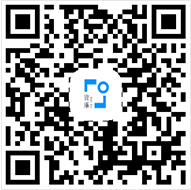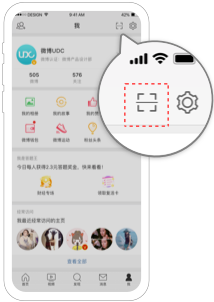传统文化构建当代艺术的生命精神
赵欣歌
唐华伟是我认识多年的朋友,是一位勤奋好学且有思想的艺术家。画如其人,人如画风。华伟自幼喜爱油画,他作画既有扎实的基本功,又有深厚的理论素养。当下,掌握西方油画技巧的画家不在少数,但能画出油画的中国精神的人,寥若晨星。这一方面在于油画作为非中国社会衍生出来的艺术品种,具有先天的外来特性;另一方面,油画的形式语言与中国人的精神品格如何调和,才能反映中国人的主观意趣和审美好尚,似乎可遇而不可求。
画画就如同做人,既需要耐心,需要长期的磨砺思考;还需要热情,见机而发,能够以所思所感行之以笔,痛快淋漓地再现新的视觉形象。华伟是个有想法、有准备的人。多年来,他一直很注重理论的积累,平时也爱阅读、写作。他出版的许多专著,多是自己撰写的文章,言辞恳切,语言犀利,对问题的分析有很独特的视角和自己的见地。这不仅源于阅读、思考,也与他长期的实践有很大关系。作为一个当代艺术家,华伟对中国美术史十分熟悉,同时,对西方美术史亦做过深入且系统的梳理。
中国近代引进西画,主要原因是基于晚清中国社会的落后和民生的凋敝。一百多年来,在几代艺术家的不懈努力下,西画在中国由无到有,由少数精英掌握到西式美术院校大量建立,对于普及美术起到了极大的作用。早期徐悲鸿、林风眠对美术教育的拓荒作用,到当代已经渐成定势。但是,当下的学院教育出现了程式化的现象——这就是在注重学生基本功的同时,忽视或者不知如何培养学生关注传统文化和创造中国精神。在与华伟的多次交谈中,我渐渐感觉到他作为一个当代艺术家,恰恰一直在思考绘画的精神作用和原始创造力。
华伟与老一代油画家冯法祀交往多年,也多次陪伴冯老外出写生创作。作为与冯老晚年经常共同创作的学生,华伟对于冯老一生的创作情况十分了解。他也下了很大功夫整理有关冯老的文献资料,这些对于他的创作与对油画传统的认知都很有裨益。不同于西方油画数百年的发展逻辑,中国油画是舶来品。早期中国油画多是直接模仿西方名家名作,是浮在社会表面,并没有深入社会的底层;当代中国油画或多或少在寻找着自己的发展道路,但依然远离中国精神,远离中国自己的绘画发展轨道。华伟高于其他画家的一面,就是他在创作中不断地思考着油画的精神属性,即当代中国人的时代品格。华伟于此做了多年的尝试,一直在寻找着契合自己的绘画语言。
在中国近代绘画发展历程中,可参照的油画家屈指可数。中国人的精神以油画介质来表现的时机成熟了吗?当代社会投身于此的画家不在少数,但能画出来感觉的,相信关注绘画的人都有自己的答案。当代社会的浮躁更加剧了艺术家投机的冒险性,都希望自己早日被大众接受,成为市场的宠儿。可是事与愿违,许多画家用心良苦,限于自己的知识水平和创造能力,雄心壮志一落千丈,变得越来越脆弱无助。华伟熟知艺术市场的运作和真正艺术的价值,他经历了多年的苦心孤诣和默默承受,是个耐得住寂寞的艺术家。正因为如此,才有他在艺术上的超越与升华。
多年前,在繁忙的工作之余,他刻苦练习书法,希望通过书法找到深入了解中国传统文化的钥匙。中国书法用笔的“锥画沙”“屋漏痕”,这些视觉形象传递着的传统文化精神,被他深深领悟,也融入他创作油画的思考中。书画同源,书法与中国画在技法上高度契合,中国画家运用书法于画面形式语言上的创作较容易成功,历史上有很多成功的范例。而作为西方艺术的油画,融合中国传统书法笔意,再传达中国精神,这种绘画语言的融会贯通确实任重道远。
华伟用写字的方法作画,突破了油画的固有技法,是一大创新,说明书法之类的传统文化对于中国人领略和把握外来文化真正价值的重要性。以书法的笔意进行油画创作,符合古人“取法乎上”的艺术思想。从技法来看,这种类似书法的笔触能够增加画面古朴自然、简约灵动、繁而不乱的美。这种内美是华伟多年追求的一种真挚纯粹的感觉。同时,用西方公共语言解构中国传统文化,并在绘画语言上进行有机置换,对于以视觉语言延续、再造中国当代社会的精神状态是一种必要的尝试。
华伟的创作不以确定的轮廓线定型,而是以一种感觉、一种超时空的线条追寻着自己的视觉思维。他的画面创造着一种远看什么都有、近看什么都找不到的意味。没有固定的轮廓线,解放了束缚画家的形的约束,这是“法外之法”。但对画面的视觉效果来说,用数根线条来确定对象的大小形状是简单便利的表现方式,又是“无法而法”。华伟巧妙运用这种方式,把这种直白简单的外美,尽情融入油彩美、笔触美的精神文化的重塑中。这是融合中西,是对西方文化的深刻顿悟,是对传统油画的突破,正是他的这一突破,将中国当代油画的表现力推向了新的高度。
华伟以书法的笔意创作,还与他追求的画面效果,或者画面所要传达的精神价值相关。所以,如果用既有的审美观去看他的画,是很难理解他追求的内在美的。事实上,这就是他油画的与众不同之处,也是其真正意义之所在。
华伟作品的价值在于他把中国书法这一凝聚中国传统文化精髓的表现方式与西方油画的媒介载体有机结合,创造出一种新的当代视觉符号。在画面上,华伟以铸铁之力运画刀,八面出锋,势有万钧。所作笔线凝练迟涩,风霜俊俏。他不求局部流畅或者造型的规整,时有破格意外之笔,或线或面,或点或画,或聚或散,不追求流俗,而是得意外之美。在用色上,他不以浮滑干涩、渐浓渐淡的方式表现色调,任浓淡、黏稠各尽其美。虽千笔万笔而不紊乱,笔中有笔,重重叠叠,痛快斩绝,在重构语言秩序中,以视觉的方式再现了一种生命的搏动和力量的张扬。
对生命的探索,对人类精神的追问,古往今来,一代代哲人不断地求索。科学家以理性的严谨和主体的睿智为人类创造了丰富的物质世界,使人类知道了宇宙的无垠和人类认识的无尽。哲学家更是以聪慧的头脑为后人洞察主体世界和客观万象找到了思维的密码。从古代艺术家刻画人类自身的美好和社会生活,到现代艺术家抽象的形式语言和潜意识的视觉再现,描绘了人类生活的各种可能,无一不是对人类未知领域的渴求和探索。华伟关注社会人生,以画笔沟通天地,站在重塑文化精神的高度再现当代的形式语言。
华伟以画家的气质表达哲学家的追问,以手中的画笔表达智者的思维灵光,异曲同工。他对画面艺术语言的探索与画面承载的文化精神和生命内涵,超越了一般画家表面的图像再现,实是当代油画最有价值的文化内核。赵无极绘画的色彩流动,是中西方文化精神碰撞的结晶;吴冠中解放了造型对绘画构图的束缚,是点画的音符和色彩的诗歌。他们把绘画语言上升到人生命运和精神气质的高度,创造了绘画史的经典。华伟继往开来,传承了千年不断的文化脉络,以油彩表达传统文化的精神旨归,从中国传统文化中汲取营养,并将绘画语言结构进行了当代转换,再塑了当代的人文精神。他在绘画语言上的探索,为当代艺术增添了新的文本与范例。
Constructing the Life Spirit of Contemporary Art with Traditional Culture
--Tang Huawei’s Oil Painting
Tang Huawei is one of my friends I have known for years and a diligent and thoughtful artist. His painting perfectly illustrates him and he is perfectly explained by his painting style. Huawei fell in love with painting at very young age, so he was endowed with solid foundation and theoretic attainment. Currently, there are large numbers of painters skilled in western painting skills, but few excel in delivering Chinese spirit in oil painting. On one hand, oil painting is of inherent exotic characteristics as an artistic species not derived from Chinese society; On the other hand, how the formal language of oil painting can be harmonized with Chinese people’s spirit, is something that can be realized by luck but cannot be deliberately sought for.
Painting is like behaving in life, which requires patience, long-term self-cultivation and reflection, enthusiasm and opportunity. With all these factors, one may depict his/her thoughts and feelings, so as to vividly and freely reproduce the new visual images. Huawei is one of those fully prepared with thoughts. For years, he has been paying attention to accumulation of theories. Also, he likes reading and writing. He published many monographs, in which most of articles were written by him. With sincere wording and sharp language, he showed his unique perspective and viewpoint in problem analysis. All these should be attributed to his long-time reading, thinking and practice. As a contemporary artist, Huawei has obtained the intimate knowledge in Chinese art history; and also, he has systematically and thoroughly combed through western art history.
The introduction of western painting in modern China was because of the backward Chinese society and tragic people’s livelihood in the late Qing Dynasty. In more than a hundred years, western painting established its presence with a couple of generations of artists’ unremitting efforts, and experienced the development from few elites’ mastery to proliferation of western art academies, which have been playing a significant role in popularizing fine art. Thanks to the road paving by Mr. Xu Beihong and Lin Fengmian at the very beginning, fine art education has been established in contemporary era. However, academic education nowadays is suffering the formulary pattern, which only emphasizes students’ basic skills, but ignores or has no idea about raising students’ concern to traditional culture and Chinese spirit. In talks with Huawei, I got to know that he, as a contemporary artist, has always been thinking over the spiritual function and primitive creativity of painting.
Huawei maintained a very close relationship with Mr. Feng Fasi, the old generation oil painting master, and went together with him for painting from life several times. As the student who often painted with Mr. Feng in his late years, Huawei knew his creation throughout the whole life very well. He spent a lot of time and energy in consolidating Mr. Feng’s relevant materials and literatures, which also benefited to his creation and understanding of tradition of oil painting. Different from the logic in hundreds years of development of western oil painting, Chinese oil paintings, as an imported genre, are mostly imitations of western masterpieces, so they are floating on the surface of society, without going deep into the grass-root level. Contemporary Chinese oil painting is more or less seeking for its own way of development, but still running far from Chinese spirit and deviating from its own track of development. Huawei is stronger than others for his continuous contemplation on the spiritual nature of oil painting in creation, that is contemporary Chinese people’s character in the era. In years of experiments, Huawei has been looking for the painting language perfectly matches with his own style.
In the development of modern Chinese painting, there are few referable oil painters. Is it the right time to express Chinese people’s spirit with oil painting? A handful of painters in contemporary time are dedicating to the mission, but how many of them can touch the essence? I think people always keeping an eye on painting have already got the answer. Today’s impetuous society further stimulated artists’ risking to speculation, in the hope to be accepted by the public and become the winner on the marketplace. Unfortunately, things always go contrary to people’s wishes. Being limited by their knowledge and creativity, many painters were frustrated despite of painstaking efforts, and became increasingly helpless and vulnerable. Huawei knew well the functioning of art market and the value of true art. After years of ploughing and polishing, he became the artist who can endure the loneliness. Due to this reason, he eventually got to transcend and sublime himself.
Many years ago, he diligently practiced handwriting in spare time after busy work, in the expectation to find the key to traditional Chinese culture. The brushworks used in Chinese calligraphy as“writing in sand with awl”and“rain leakage through cracked ceiling”are creating visual images to deliver the spirit of traditional culture, and are realized and integrated by him into his conception of oil painting. Calligraphy and painting share the same origin, and highly identical skills, so Chinese painters may easily succeed in applying handwriting skills to painting creation, which can be proved by successful cases in history. As an representative form of western art, oil painting is combined with the brush skills of traditional Chinese calligraphy, and assumed to deliver Chinese spirit, such a harmonization of painting language still has a long way to go.
Huawei paints in the same way as he writes, and broke through the intrinsic skills of oil painting. The innovation proves the traditional culture’s significance in helping Chinese properly handle and understand the true value of foreign cultures. To create oil painting with the skills of handwriting perfectly matches the ancient Chinese artistic thinking, “adopting the top-level method.” In terms of technique, the brushwork identical with handwriting adds the plain, natural, simple, dynamic, diversified but orderly beauty to the painting, which is the pure and authentic feeling for which Huawei has been pursuing for years. Meanwhile, deconstructing traditional Chinese culture with western public language, and organically displacing painting language are necessary experiments to extend and recreate the spiritual state of contemporary Chinese society with visual language.
Huawei does not finalize different images with fixed contour line, but follows his own visual thinking with feeling, with lines beyond time and space. His paintings deliver the sense of everything being there when seeing afar, but nothing being found when watching near. Absence of contour lines unrestrained different forms under the brush of the painter, and created a “methodless method.” Huawei intelligently applied the plain and simple beauty to reshaping of spiritual culture emphasizing aesthetic color and brushwork. The combination of east and west represents deep understanding to western culture, and great breakthrough of traditional oil painting. Such a breakthrough pushed the expressive power of contemporary Chinese oil painting to a new level.
Huawei paints with the skills used in handwriting, because of the effect he seeks for or the spiritual value he wants the painting to deliver. Therefore, it may be hard to understand the internal beauty he has been pursuing after, if enjoying his paintings with conventional aesthetic standard. In fact, this is where his oil painting differs from others’ and the true meaning lies.
Huawei’s artworks are valuable because he organically combined Chinese calligraphy, the artistic form containing the essence of traditional Chinese culture, with western oil painting, the media carrying on western culture, and created a series of brand new contemporary visual symbols. In painting, Huawei waved brush with an iron hand, creating the sharp angles and imposing strength all over. All the lines seemed concise, unsmooth, weathered but graceful. He never focused on local smoothness or structured modeling, but frequently applied exceptional and unexpected strokes, line or plane dotted or drawn in a gathered or scattered manner. He often expected surprising beauty, rather than compromised to prevalent fashion. In coloring, he did not render with paints flowing superficially in the gradually intensifying manner, but freely applied thick or light colors. Tens of thousands of strokes overlapped and contained each other, but never disturbed with one another. In reordering painting languages, they visually revitalized the dynamics of life and power.
Throughout history, the exploration into life and questioning about human spirit attracted philosophers to pursue after generation after generation. Scientists, with their reasoning and wisdom, created the enriched material world for human being, and enlightened us with the infinite universe and knowledge. Philosophers, with their intelligence, discovered the ideological password to the subjective world and objective existence. All these have proved human desire to explore the unknown world, from ancient artists’ depictions of human integrity and social life, to modern artists’ uses of abstract formal language and visual recreations of subconsciousness, as well as descriptions of all possibilities in human life. Huawei concerns society and human life, communicates with the heaven and the earth, and revitalizes contemporary formal language from the perspective of reshaping cultural spirit.
Huawei questions like a philosopher with the painter’s attitude, and expresses a sage’s thinking with brush in hand. In this regards, they perform in the same manner. His exploration into art language, the cultural spirit and life meaning contained in his paintings have gone beyond ordinary image recreation, and constituted the cultural essence most valuable to contemporary oil painting. The flowing color in Zhao Wuji’s works is the fruit of spiritual collision of Chinese and western cultures; Wu Guanzhong freed the limitation of modeling to composition, and composed the notes of dot painting and poem of color. They lifted painting language to the height of human destiny and spiritual temperament, and created classics for art history. Huawei continued with the past and opened up the future. While carrying on the thousands-years-old culture, he delivered the spirit of traditional culture with oil paints, drew nutrition from traditional Chinese culture, transformed painting language into contemporary one, and reshaped contemporary humanistic spirit. His exploration into painting language added new story and case to contemporary art.
Zhao Xinge
Doctor of Fine Arts & Associate Researcher
Research Institute of Fine Arts, China Art Research Institute


扫描下载宝库APP
扫描关注新浪收藏官方微信







